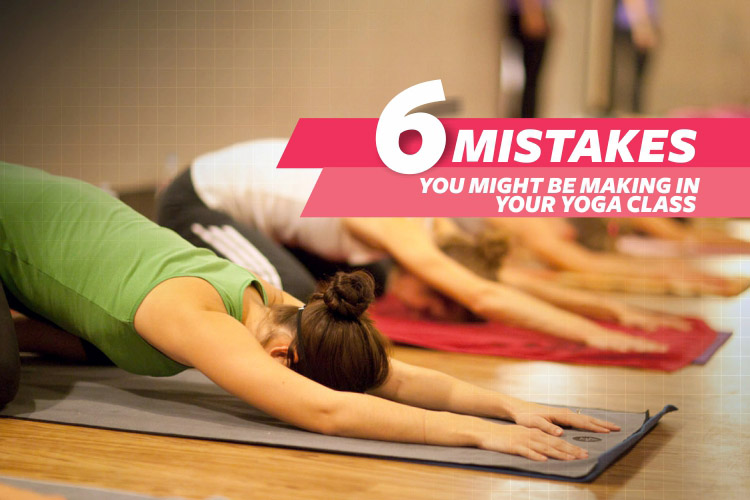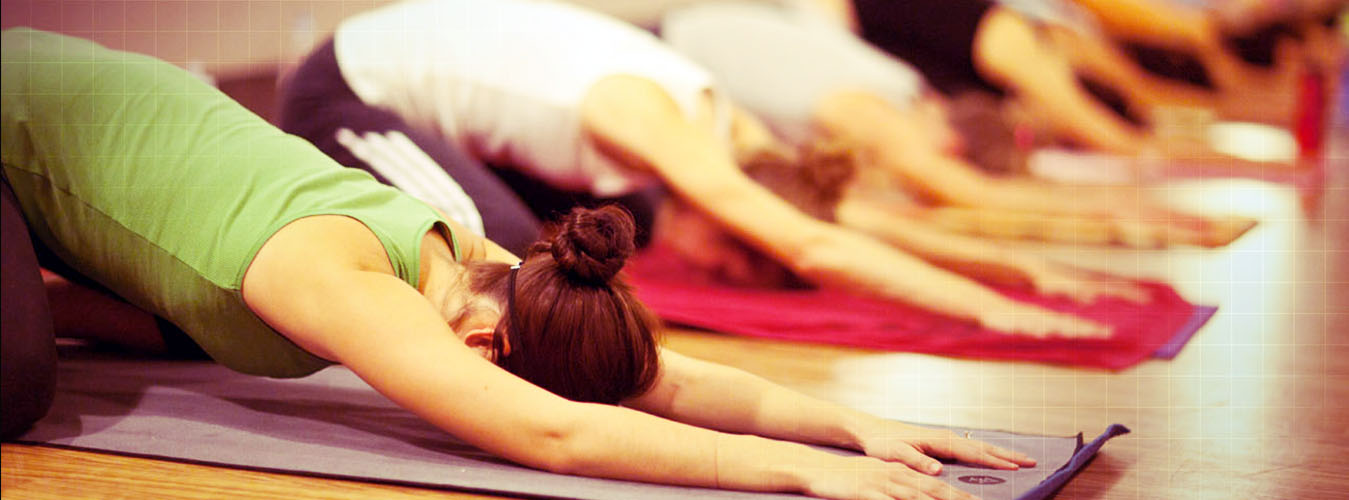INJURY: in·ju·ry
noun \ˈinj-rē\
: harm or damage
: Any physical damage to the body caused by violence, accident or fracture etc.
You must be wondering why on earth am I writing the dictionary meaning of ‘Injury’?
Well, that’s because only after being a part of my cousin’s Yoga class a few days ago, did I realize that most students don’t take Yoga injuries seriously at all.
Many, not just one or two students at the class, were playing around with the so called flexibility of their body and joints and were least bothered as to what will happen to it, if God forbid, they get injured. There and then, I felt like going up to them and shaking off that veil of ignorance.
So, here I am with a detailed post on the most common Yoga injuries that happen to all and the best ways to avoid them.
Contents
Lower Back
Poses where it can happen: Forward fold poses, downward dog poses.
How it is caused: The most common of all, lower back injuries occur as a result of the rounding of the spine and when the spine is made to twist in the wrong direction.
Precautions:
- Avoid lower back injuries by lengthening the torso or stretching yourself before performing any pose in order to avoid rounding.
- Make use of a folded towel or blanket under your knees or hips, while performing seated forward bends.
- Strengthening weak back muscles and the core muscles can help avoid lower back injuries.
Wrist
Poses where it can happen: Arm balance poses and handstands
How it is caused: When all the body weight is placed on the wrists, especially when the hands are on the mat/floor. If you have carpal tunnel syndrome or excessively tender wrists due to working a lot on the computer, then you are more prone to wrist injuries.
Precautions:
- Refrain from performing poses that put all your weight on your hands and wrists, like few poses from Sun salutation. Even if you do those, increase the number of repetitions gradually starting from just one per day.
- Make sure your body’s alignment is perfect i.e., your wrists, shoulders, chest, hips and legs should be in a straight line, especially while performing arm balance poses and handstands.
- Spread out your fingers evenly and press your index finger and the heel of your hand on to the mat. Tilting the fingers downwards can also help you release the pressure off your wrists.
- Avoid doing arm balances if you are overweight or have a larger lower body in comparison to the upper body.
- Make sure your past arm fractures or muscle tears are fully healed. Even then, stay a little more alert.
Shoulder
Poses where it can happen: Headstands and shoulder stand poses
How it is caused: It is caused by stiff and tight shoulders. Often, while performing shoulder stands, students do not make proper use of the arms, shoulders and neck muscles to support themselves and as a result, get injured. Excessive stretching and extending also leads to shoulder injuries.
Precautions:
- While stretching, do not pull too hard on the shoulders.
- Always try your best to keep the shoulders held back, down and away from the ears.
- Rid yourself of tight shoulders by practicing poses like the dolphin pose or the bridge pose.
- Never ever force your shoulders to get into a pose, if they do not feel ready for it.
- Use thickly folded blankets for support if you are not sure of the pose you are performing.
- Always perform a warm up by rolling your shoulders in and out in circles.
Neck
Poses where it can happen: Deep backbends, headstands, shoulder stands
How it is caused: It is caused when intense pressure is put on the neck muscles, repeatedly and incorrectly, while performing any pose.
Precautions:
- If your neck is injured, totally avoid poses where full inversion is required.
- While performing inversion poses, use props like blocks or blankets that elevate the neck away from the floor.
- Take full support of your shoulder blades and let them be drawn down and back all the time.
- Avoid jerking your head in order to prevent your body from destabilizing.
Hamstring
Poses where it can happen: Forward Bends
How it is caused: Owing to our modern style of living, most of us have tight hamstrings which can easily be over-pulled. Hamstring injury is caused when any such stretching happens.
Precautions:
- Practice poses that lengthen and loosen the hamstrings like the downward dog pose and lunges.
- Avoid any poses (like deep forward bends while standing) that extend through the back of the body and the legs, if you are prone to hamstring injury.
- Bend your knees while performing poses that can over-stretch the hamstrings.
- In forward bends, be they seated or standing, avoid locking your knee joints and keep them a little bent.
Knee
Poses where it can happen: Hip opening poses (like, cobbler’s pose), cross-legged poses
How it is caused: Trying to deepen a pose without having warmed up properly or sufficiently is a common cause of knee injury. Twisting your knee unreasonably or moving from one pose to another which are not supposed to be performed consecutively – are other common causes.
Precautions:
- While performing poses like the Bound Angle Pose (Baddha Konasana), you should feel the stretch around the hip area. Stop if you feel pressure or pain in the knee.
- Perform more standing forward bends and tree pose which help loosen the leg muscles and hamstrings, keeping knee injuries at bay.
- While performing forward bends, make sure your knee and heel are in a straight line (implies that the body is bearing weight properly).
- Avoid poses that ask you to sit in a cross-legged position like, Lotus Pose (Padmasana) or Easy Pose (Sukhasana).
5 Tips to Avoid Getting Injured
#1 – Prepare Before You Perform:
The list of preparatory poses that your teacher gave you for the pose of the day, is not meant to be read and forgotten. Make sure you are able to perform all preparatory poses before getting into the main pose. Do not over-stretch yourself to perform any pose if you are not confident about it.
#2 – Warm Up Well:
Think it is a waste of time to warm up? Why not start with the headstand right away? Oh! You are terribly mistaken then! Your mind and body need to get into the mood to work out, so warming up is very essential. An unprepared body is more prone to injuries. Make it a point to warm up your body properly before beginning your Yoga session.
#3 – Slow And Steady:
Your Yoga teacher can do that headstand for she’s been practicing it for months and years now. Admit the fact that you are a ‘student’ and still on your way. Go slow and be steady. Don’t aim to perform any challenging pose right in the first month. Keep practicing it steadily and make your way or else be prepared – for an injury awaits you.
#4 – Customize Your Class:
Talk to your Yoga teacher about any issues or problems that you have or want to target. She will lend a hand to customize and modify the poses accordingly. Performing a pose that’s not fit for you (owing to a particular problem) can land you in trouble.
#5 – Listen! Listen! Listen!:
Your body talks and you need to listen to it. Hear and be observant to any signals that your body gives you that you’ve had enough and it’s time to release the pose and relax now.






Comments are off this post!